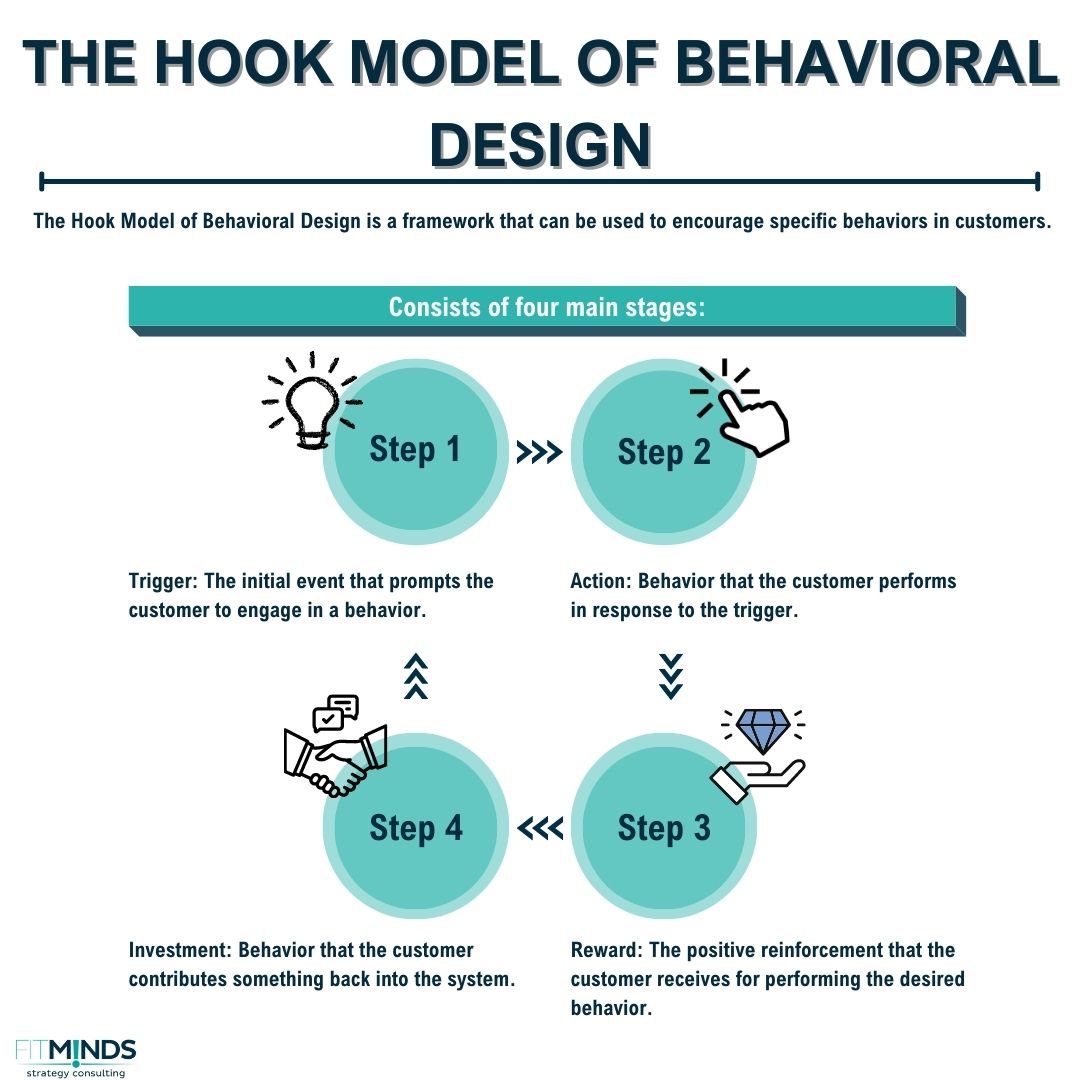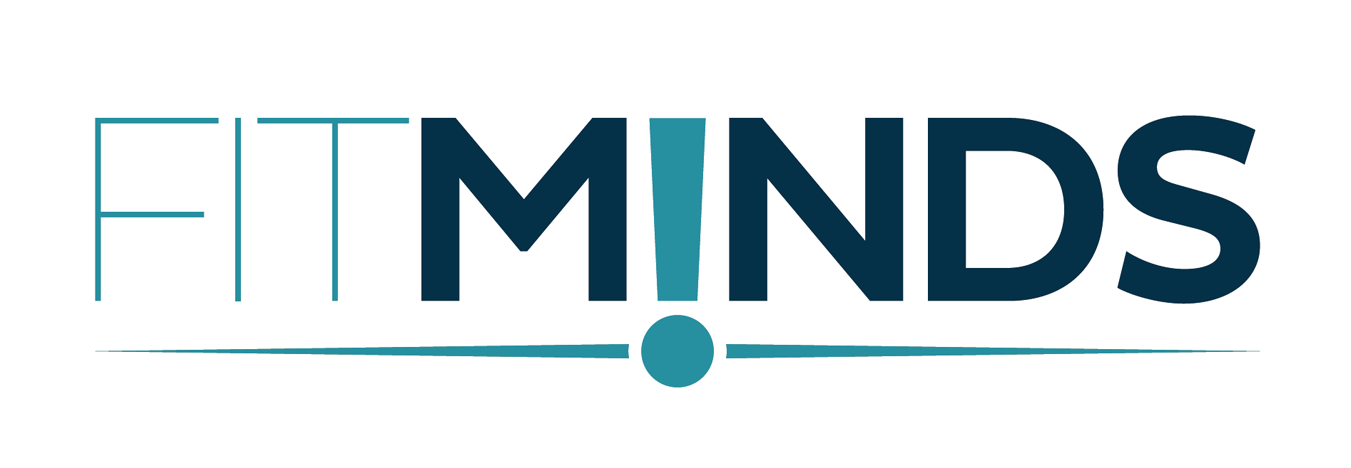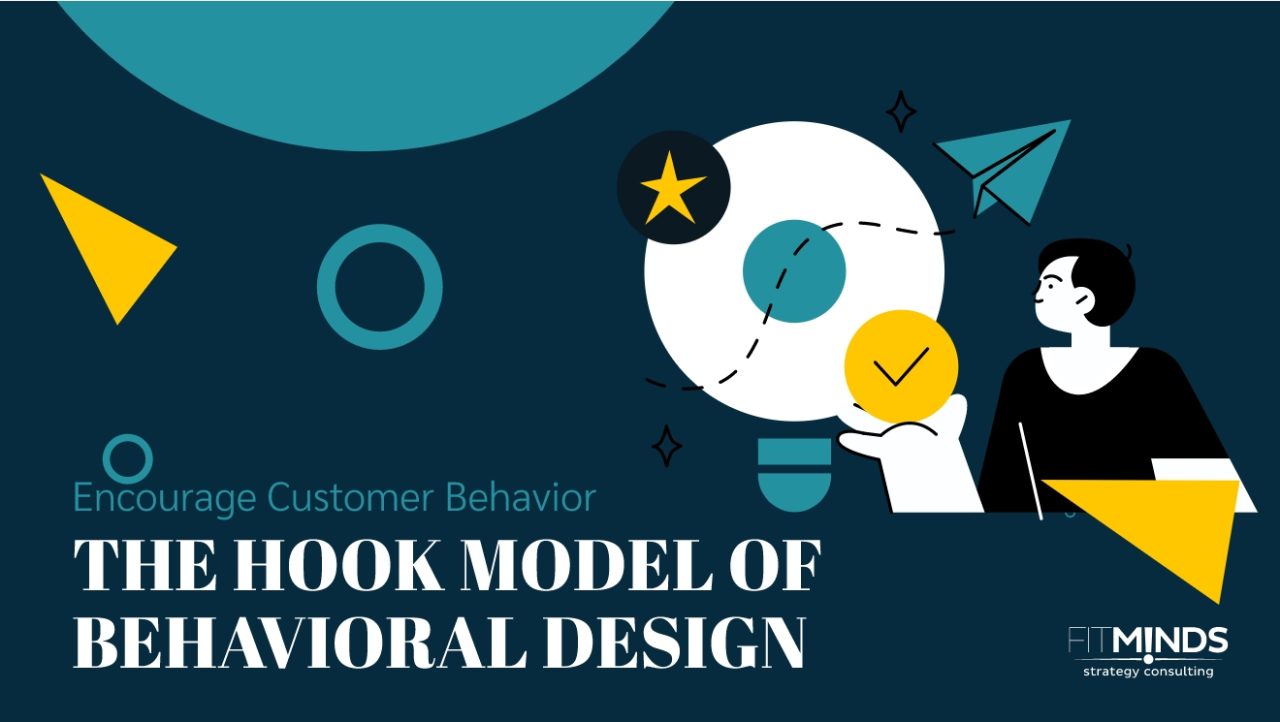The Hook Model of Behavioral Design is a framework that can be used to encourage specific behaviors in customers. The model is created by Nir Eyal, lecturer and investor known for his bestselling book, Hooked: How to Build Habit-Forming Products. It is based on the idea that the most effective way to encourage a behavior is to create a system that provides a clear and immediate reward for that behavior, followed by a variety of intermittent rewards that keep the behavior going.
Main Benefits of The Hook Model of Behavioral Design
By using The Hook Model of Behavioral Design, businesses can create systems that encourage customers to engage with their products or services in a specific way. This can help to increase customer loyalty, drive sales, and improve overall customer satisfaction.
The Hook Model of Behavioral Design helps you:
- To understand what drives customer behavior.
- To understand what can change customer behaviour and create day-to-day habits around your products.
- To bring users back repeatedly by creating habits around products or services.
- To match the right variable reward with the intended customer behavior.
- To result in voluntary, high-frequency engagement with customers.
Explanation of The Hook Model of Behavioral Design
The Hook Model is a four-phase process that businesses use to encourage specific customer behaviour. It is based on the creation of habitual behaviors via a looping cycle that consists of four main stages:
Stage 1: Trigger
Stage 2: Action
Stage 3: Reward
Stage 4: Investment

Stage 1: Trigger
The trigger is the initial event that prompts the customer to engage in a behavior. This could be a product advertisement, an email, a social media post, or anything else that catches the customer’s attention.
Stage 2: Action
The action is the behavior that the customer performs in response to the trigger. This could be clicking on a link, making a purchase, or sharing a piece of content.
Stage 3: Reward
The reward is the positive reinforcement that the customer receives for performing the desired behavior. This could be a discount, a free trial, or any other incentive that encourages the customer to continue engaging with the product or service.
Stage 4: Investment
The final stage of the The Hook Model is investment. This is where the customer contributes something back into the system, such as time, data, or personal information. This investment increases the likelihood that the customer will continue to engage with the product or service in the future.
How to Apply The Hook Model of Behavioral Design
To apply The Hook Model of Behavioral Design to your business, FITMINDS is providing an adoption of the model that fits your company and your company’s needs.
The use of digital marketing in the pharmaceutical industry enables companies to raise their brand awareness and encourage specific behaviors in customers. There are digital opportunities for the pharma and healthcare sector to launch a product and to bring physician segment back repeatedly by creating habits around products or services. The Hook Model of Behavioral Design can also be adapted to your business considering digital marketing strategies.
Contact us to get more information or discover your probable personalized roadmap for The Hook Model of Behavioral Design.
Additional Tips and Readings
- You can learn more about examining buyer’s behavior with the Product Diffusion Curve.
- To increase your customer loyalty and lifetime value, you can check RFM Analysis & Segmentation.
- To learn more about the reputation of a brand build on customers’ perceptions, you can read our Keller’s Brand Equity Pyramid
- To read more about the steps of customers’ journey during the purchasing period, you can check the Sales Funnel
Contact us to encourage customer behavior via The Hook Model of Behavioral Design.



13 comments
Pingback: acheter kamagra prescrire sun medicament pharmacie
Pingback: cheapest buy enclomiphene generic medications
Pingback: how to order androxal generic in canada
Pingback: how to order dutasteride price prescription
Pingback: buying flexeril cyclobenzaprine generic when available
Pingback: order gabapentin generic usa
Pingback: order fildena australia buy online
Pingback: buying itraconazole australia cheap
Pingback: get staxyn cheap no prescription
Pingback: buying avodart singapore where to buy
Pingback: online order rifaximin uk generic
Pingback: cheap xifaxan cheap prices
Pingback: online lékárny bez předpisu kamagra
Comments are closed.